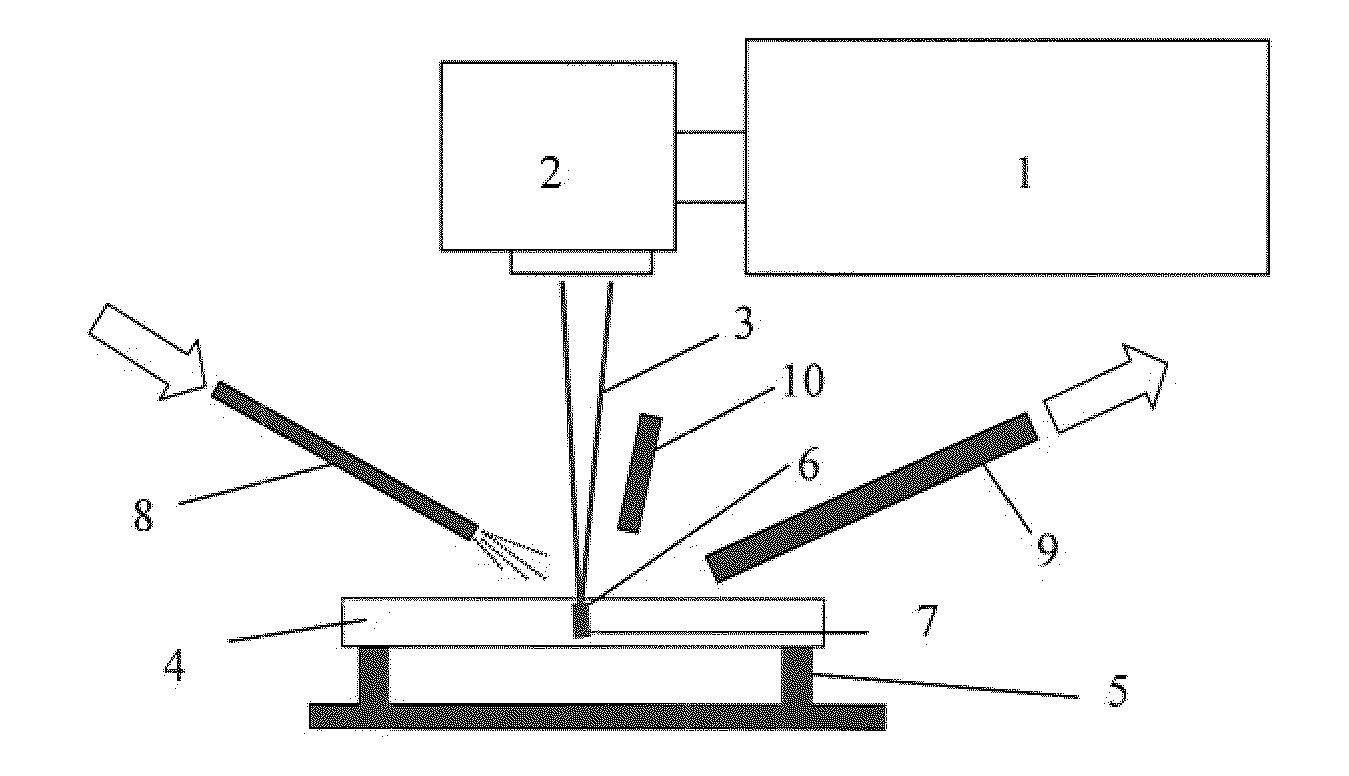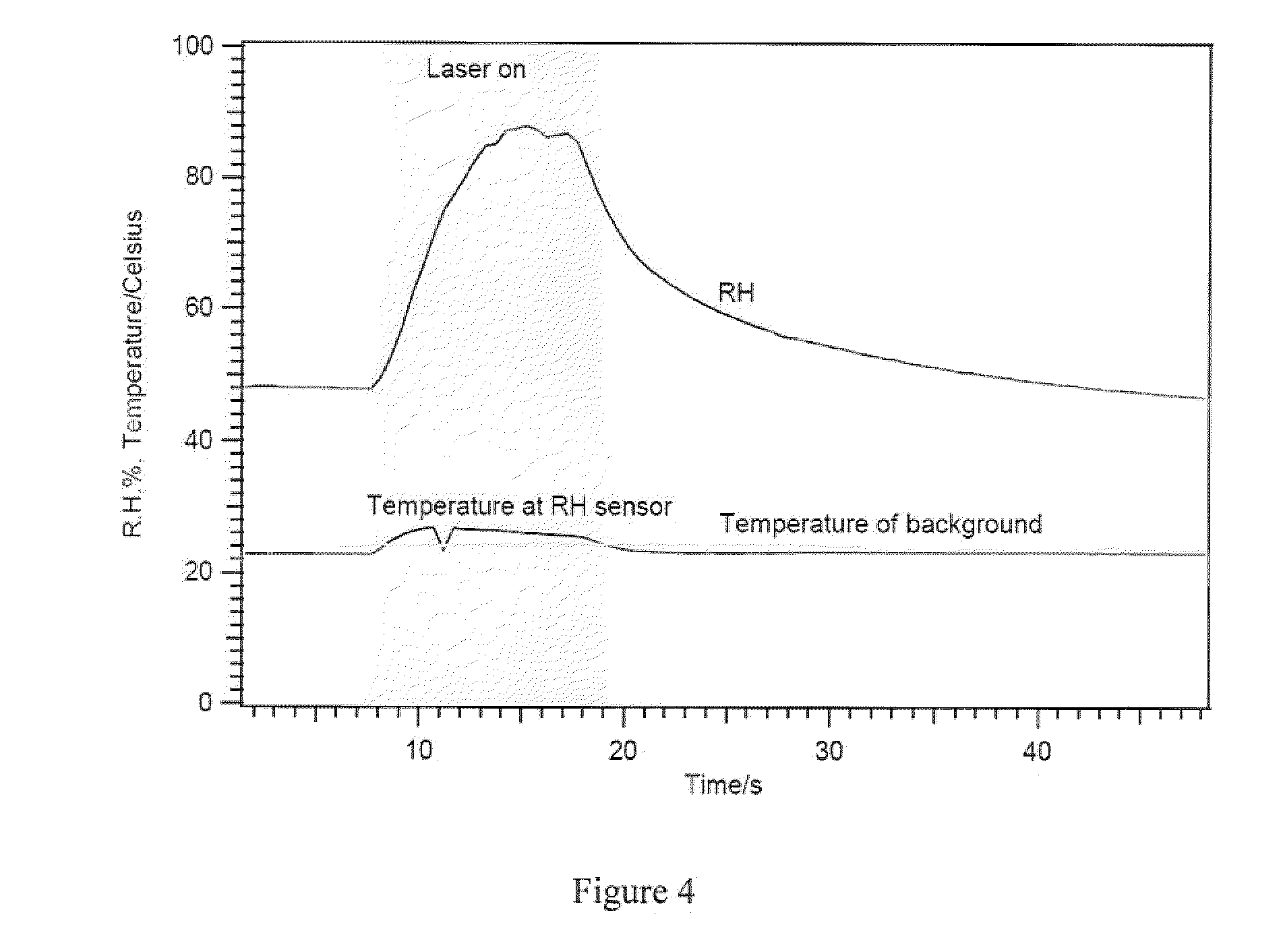Method for laser ablation
a laser and liquid phase technology, applied in laser beam welding apparatus, coatings, manufacturing tools, etc., can solve the problems of damage to nano- and micro-scale structures in materials, and reducing the efficiency of the ablation process, etc., to achieve good hydrophobicity, low surface tension, and high viscosity
- Summary
- Abstract
- Description
- Claims
- Application Information
AI Technical Summary
Benefits of technology
Problems solved by technology
Method used
Image
Examples
example 2
[0132]A second example is based on decomposition of an SF6 ambient, which also produces a liquid phase. The laser parameters used are similar to the tetrafluoroethane example above. In an open flow environment, the gas flow rate used to demonstrate the process is 5.8 g min−1 (0.93 litres min−1). The process to attain liquefaction is more complex, but depending on the target material (M), the gas is understood to produce volatile compounds MFx, and SF4. SF4 in turn reacts with H2O (in air) to produce SOF2 and HF.
[0133]Each of these examples is based on the generation of hydrogen fluoride (HF). HF has an important property in that under standard temperature and pressure (STP), it condenses at 19.5° C. whereas the other hydrogen halides condense at much lower temperatures. The properties of the surrounding gas ambient are important to ensure that an intact liquid film of HF is generated and maintained for a significant time on the order of seconds to minutes.
[0134]The words “comprises / ...
PUM
| Property | Measurement | Unit |
|---|---|---|
| Angle | aaaaa | aaaaa |
| Temperature | aaaaa | aaaaa |
| Flow rate | aaaaa | aaaaa |
Abstract
Description
Claims
Application Information
 Login to View More
Login to View More - R&D
- Intellectual Property
- Life Sciences
- Materials
- Tech Scout
- Unparalleled Data Quality
- Higher Quality Content
- 60% Fewer Hallucinations
Browse by: Latest US Patents, China's latest patents, Technical Efficacy Thesaurus, Application Domain, Technology Topic, Popular Technical Reports.
© 2025 PatSnap. All rights reserved.Legal|Privacy policy|Modern Slavery Act Transparency Statement|Sitemap|About US| Contact US: help@patsnap.com



